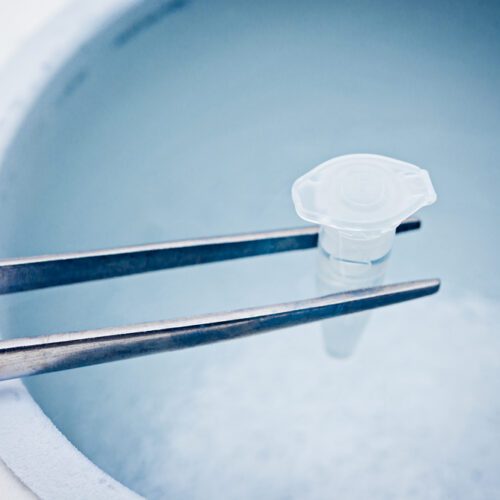Exercise During IVF
When starting infertility treatments such as in vitro fertilization (IVF), there are often a set of new guidelines to follow. Among them, is how to approach exercise; many women have questions about whether they should exercise during their infertility treatment. This article will go over the general guidelines for exercising during IVF, as well as the kinds of exercises that are recommended.
Should you exercise during IVF?
If you are someone who already exercises regularly, then continuing to stay active during your IVF treatment is advisable. Naturally, you should modify your routine with the IVF success rate in mind, ensuring that you don’t engage in activities that are too strenuous or ones that involve a lot of twisting or quick transitions from one position to another. However, if you are new to fitness, it’s best to start prior to your IVF treatment, not during a cycle.
When to start exercising regularly for the first time
If you are looking to make the lifestyle change of integrating exercise, it’s recommended that you do so before you begin your IVF cycle. This will give your body time to adjust to the activity. Starting to exercise during the course of your infertility treatment, on the other hand, could add further stress and strain on your body, which can affect your IVF success rate.
How much exercise is too much?
It is important to note that too much exercise can have a negative impact on IVF success rates. The general guideline is to do about 150 minutes (or 2.5 hours) per week of low to moderate activity during your infertility treatment. This activity should not exert a large strain on your body. Instead, focus on daily movement and not being entirely sedentary. If you are already active, it’s important that you do no more than four hours of exercise per week.
Exercises recommended during IVF
The best exercises to do while undergoing in vitro fertilization are low-impact exercises such as walking, swimming and low-intensity yoga or pilates. Engaging in these types of activities produces small muscle contractions and helps to improve blood flow and oxygen circulation throughout the body. Regardless of the activity, be sure it doesn’t involve a lot of twisting motions or body inversions. Additionally, if you are engaged in a group fitness class, you can always ask the teacher for modifications.
Swimming
Swimming is a great option for exercise during infertility treatment. It’s an activity that has a low impact on your joints and can be a good alternative to running. A 60-minute session in the pool can produce the same effects as a 30-minute run, making it an excellent alternative.
Walking
Walking at a moderate and consistent pace is another possible option during an IVF treatment cycle. For those who routinely engage in high-impact exercises, walking might not feel like much of a workout; you can include some slight elevation to increase your heart rate and the overall intensity. Walking longer distances is also more of a workout, but be sure to keep the same steady pace.
Low-intensity yoga
Opting for some low-intensity yoga, is a great way to get your blood flowing and to maintain muscle without putting too much stress on your body. Yoga is a meditative practice that can help calm your nervous system as you go through the often stressful journey of IVF treatment. There are recommendations on what kinds of yoga poses to practice during the different stages of in vitro fertilization that are worth checking out. As long as you take it easy and follow the recommended modifications, low-intensity yoga is a great option for maintaining a physical exercise program during your infertility treatment.
Exercises to avoid during IVF
As you prepare for infertility treatment, you may have many questions about what to avoid while undergoing an IVF cycle. During IVF treatment, ovarian stimulation medications are often used to encourage the release of multiple eggs and reduce infertility in women. This can cause the ovaries to increase in size, which, when paired with vigorous exercise, can lead to soreness and discomfort. On top of your physical discomfort, overexercising can also affect your IVF success rate. So, what types of exercise should be avoided specifically?
- Weight training/lifting
- High-intensity interval training (HIIT)
- CrossFit
- High-intensity or hot yoga
- Vigorous cycling (both indoor and outdoor)
These activities all put significant stress on your body and should be avoided during IVF or similar fertility treatment options. If you are going to continue engaging in any of the above workouts, it’s important to discuss this with your doctor or fertility specialist prior to starting treatment.
Running during IVF
For long-time runners, the prospect of giving up the habit for months at a time can be unappealing. As mentioned previously, it’s essential to keep stress and strain low during the course of infertility treatments. Running is considered to be too high intensity during IVF as a rule, but many women have found that it’s an activity that provides stress relief. If you plan on continuing to run throughout your infertility treatment, make sure that you keep the pace moderate and the exertion to a minimum. It’s worth checking out the stories of those who have dealt with infertility and continued to run, and talking to your doctor to figure out what the best course of action is for you.
Discuss your workout routine with your infertility specialist
When discussing fertility treatment options or undergoing female infertility testing with your doctor, it’s important to discuss your level of activity and what that could mean for your exercise routine in the coming months. Create a plan with your infertility specialist that will allow you to continue with a healthy amount of exercise during your infertility treatments.
Doing a female infertility test and exploring your fertility treatment options can be a time of uncertainty and stress. It’s completely normal to want to relieve some stress by hitting the gym, but it’s important that, prior to beginning infertility treatments, you research what exercises you should not be doing, in addition to exercises that can support you during your treatment cycle. With all of your research done, you’ll be well on your way to a happy and healthy round of in vitro fertilization.



